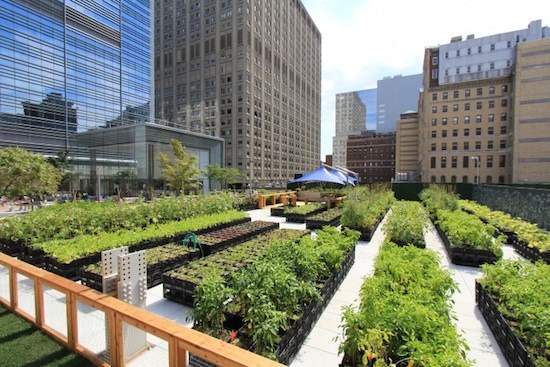A couple of years ago, urban farming burst into the mainstream food industry news with rooftop farms popping up in major cities like New York City and Chicago. Instead of requiring large expanses of land to cultivate, they used creative means to create farmland on top of large buildings in urban areas. The benefit to this was pretty obvious – this was essentially unused space that was filling a need, and it provided quality, local food to nearby businesses and restaurants. As anyone will tell you, local is good because it requires less transportation costs (both in money and environmental factors). Also, it’s just plain convenient restaurants and businesses in cities, since they can easily and quickly get the fruits and vegetables that they need in order to operate.
But how exactly does urban farming affect the environment? Are they any lesser-known factors that make urban farming a less-than-ideal solution? Let’s find out!
First, let’s define urban farming. We’ve already talked about rooftop farms on a commercial scale, but urban farming can be a small, personal endeavor too. Balcony gardens, backyard gardens, neighborhood and community gardens in vacant lots, roadside fringe agriculture, and open space livestock grazing. These activities – from large-scale to small-scale, all comprise the larger urban farming effort and also play largely into the “locavore” movement (growing and sourcing food locally to cut down on carbon emissions from transportation).
What are the Benefits of Urban Farming?
There are quite a few, according to the U.S. Environmental Protection Agency. For starters, urban farming that follows the guidelines and best management practices of the EPA can provide a natural habitat for flora and fauna. it can also decrease CO2 emissions, while improving overall soil fertility and stability, and increase carbon sequestration. Plus, it aids against natural disasters like floods and landslides.
Those are some pretty hefty benefits, for a pretty minimal investment, so we wanted to see if there was a downside to urban farming. Because from the outside, it looks like a pretty great deal.
Decreased Density in Urban Levels
Harvard professor and well-known economist, Edward Glaeser, has argued that urban farming – specifically in vacant lots, parking lots, and other potentially valuable open land in urban areas will actually work against the environment by decreasing density levels in cities and other urban areas. What does that mean? It means that as more ground space is taken up by farms or gardens, it will decrease the amount of people that can reasonably fit into a city, forcing them further away from the city center, and increasing their need for cars or other types of transportation. This, in turn, increases carbon emissions and cancels out the benefit of the urban farms and gardens. In urban areas, it also helps create much needed shade and counters against the “heat island” effect.
It’s a valid argument, although it does neglect to consider one important aspect of the urban farming movement – building vertically. Many opponents of his idea have argued that because urban centers tend to be build vertically anyway, taking up valuable land real estate isn’t really an issue. Rooftop gardens don’t take away from the abillity to house residents. And an indoor greenhouse could be built like a residential or commercial tower, where farming could take place on multiple floors within the same building, so long as there was adequate light and good growing conditions.
In fact, many people insist that large sprawling metropolitan areas could function with only rooftop farms and greenhouses. According to Laurie Schoeman, director of nonprofit New York Sun Works – an organization that promotes the use of rooftop urban farming, there’s a mind boggling 14,000 acres of unused rooftop space in New York City alone. According to her organization, that’s enough to feed roughly 20 million people. Put another way, it could feed more than double the amount of residents in New York City.
Overall, it’s hard to find strong arguments against urban farming. Even if vacant lots are being used temporarily until there’s a stronger need for residential or commercial development, it’s still a good use of space. And the environmental benefits, along with the quality of life benefits, strongly outweigh any small inconveniences that urban farming might cause.
Now, we want to hear from you! Are you for or against urban farming? Do you have a balcony, window, or backyard garden where you grow vegetables, fruits, or herbs? Let us know in the comments!






Trackbacks/Pingbacks